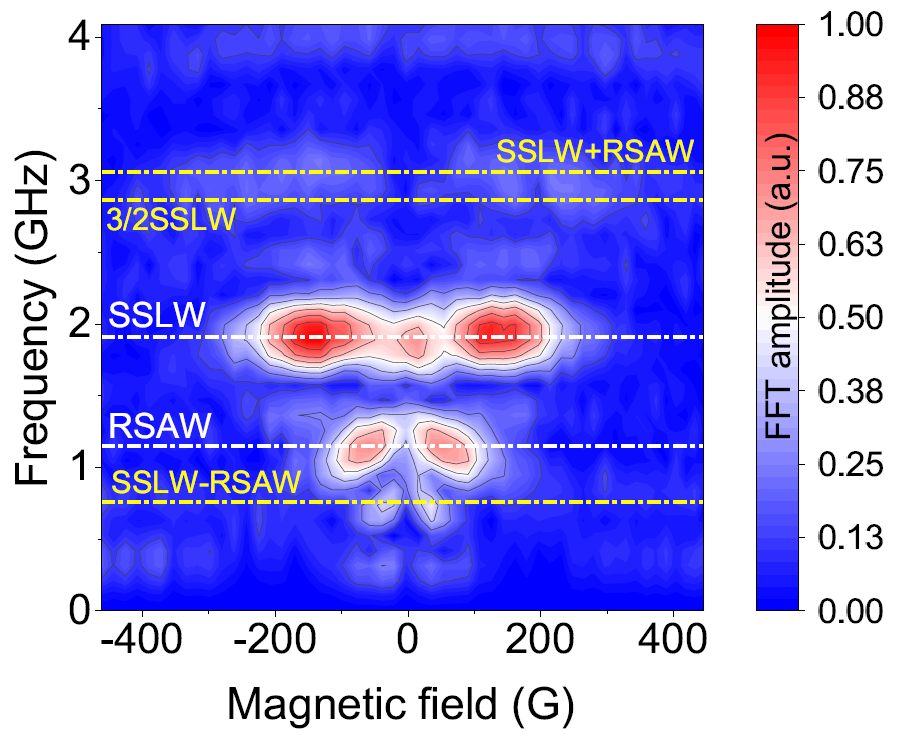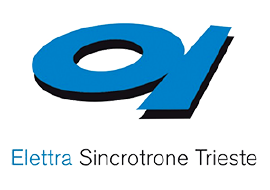SETUP AND APPLICATIONS
The TG setup is based on Pharos laser, with the possibility to change the repetition rate from single pulse to 1 MHz, and a maximum energy per pulse of 40 µJ. The beam is split with the 70% of Pharos intensity on the pump @ 1030 nm, and the 30% for the probe @515 nm (after second harmonic generation). The two pumps are obtained by the use of a home-made phase mask, which allows an easy alignment of the angle between pump and probe, and the relative phase matching condition. The generated angle between pumps fixes also the wave-vector of the induced transient grating, and can be easily changed by the use of three different phase masks (see table for the accessible wave-vector range). The delay between pump and probe can be varied between few fs up to ~3.4 ns with the pulsed probe, and between 3 ns to ms with the continuous probe (with heterodyne detection). The energy/pulse of pump and probe pulses can be independently reduced to few nJ/pulse for delicate samples. The sample holder is equipped with a translation stage and an electromagnet, with a maximum available magnetic field of 1000 G. In the next future a vacuum chamber, connected to a low vibration cryostat, will allow control the temperature down to 5K.


Various detection schemes are available. It is possible to measure acoustic oscillations in transmission and reflection mode, both in short (up to 3.4 ns) and long (up to ms) time range. If a magneto-acoustic coupling is present in the sample, phonon-pumped spin wave can be generated and detected in transmission mode (Faraday effect) or in reflection mode (magneto-optical Kerr effect). The acquisition system is based on a large bandwidth photo-receiver, coupled with an oscilloscope (for continuous probe) or a femtowatt detector coupled with a lock-in amplifier and an acquisition board. The Labview-based acquisition software allow to register the variation of signal intensity as a function of the delay between pump and probe. Scam of the time traces as a function of applied magnetic field are automatized for magnetoelastic measurements.







